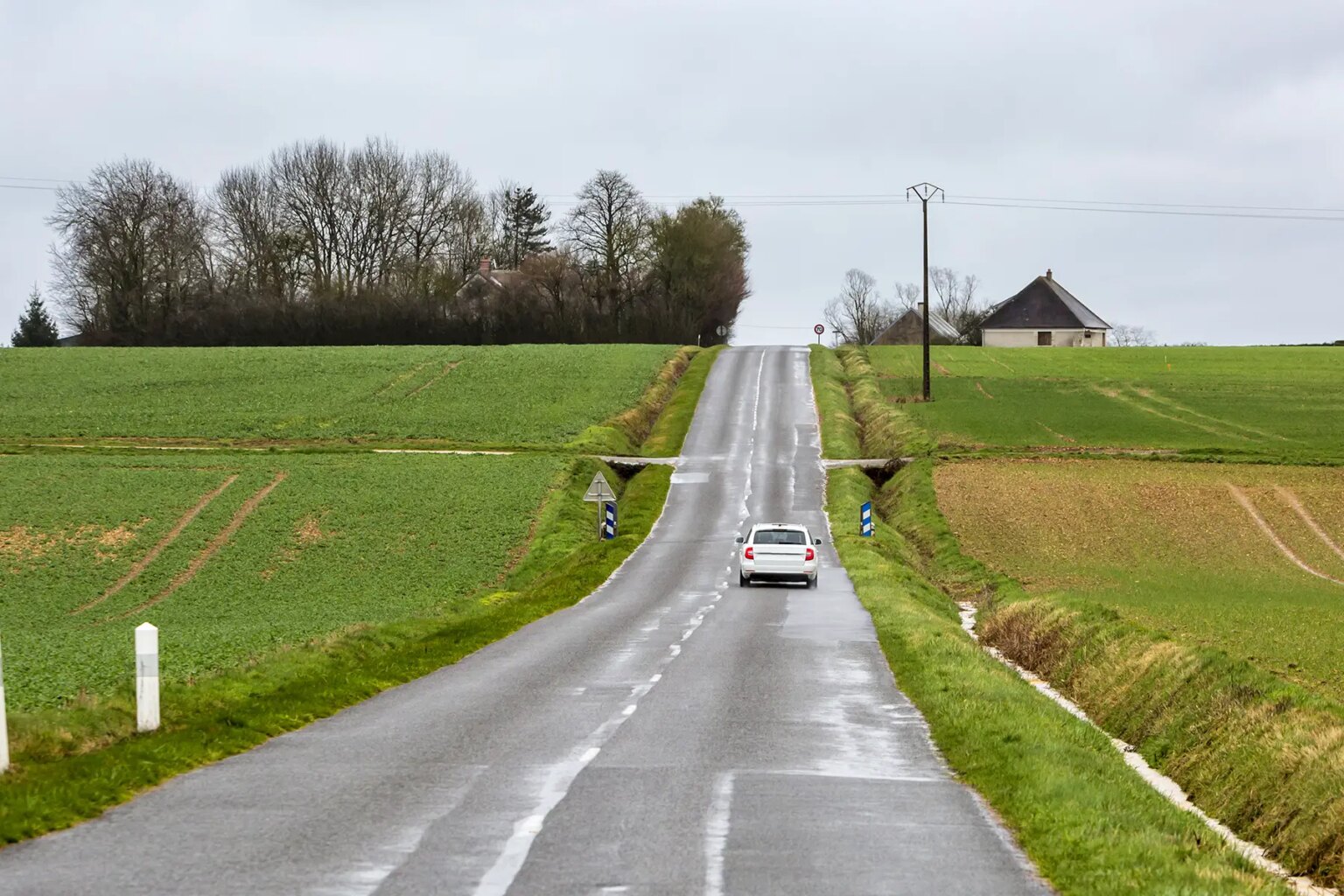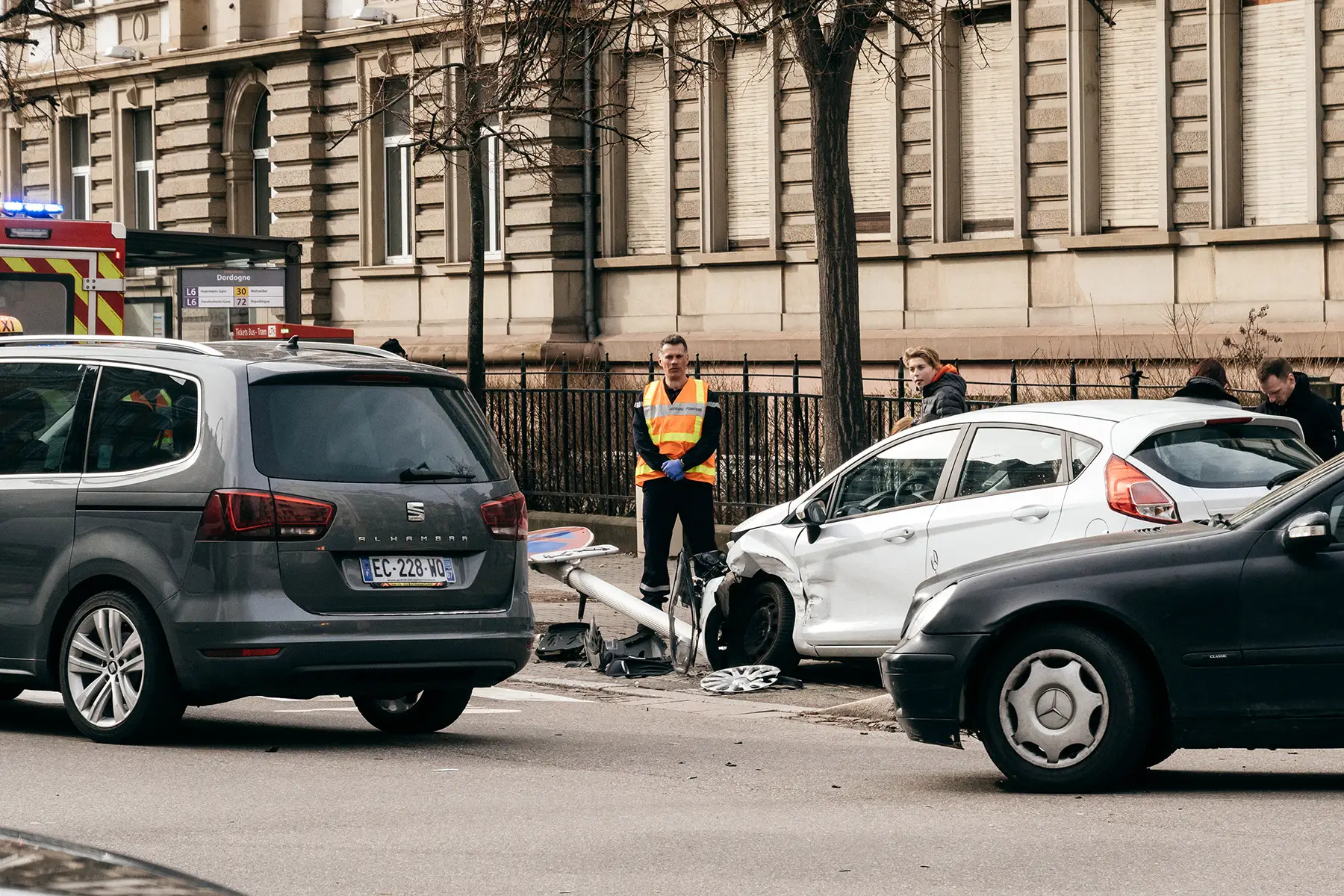While driving in France isn’t that different from driving in the United States, Canada, or elsewhere in Europe, there are some specific traffic laws that you need to be aware of before hitting the road. Whether you’re embarking on a road trip to explore some of the country’s beautiful destinations, or simply looking to get from A to B, this article covers everything you need to know about driving in France, including the following:
- Driving in France
- Who can drive in France?
- French driving licenses
- Car registration in France
- Drivers with disabilities
- Driving and maintenance costs
- Driving rules and penalties in France
- Road signs in France
- Traffic information in France
- Parking in France
- Road accidents and breakdowns
- Cars in France
- Car repair in France
- Tips on driving in France
- Useful resources
Groupama
Check out Groupama auto insurance for a reliable companion on the road. With comprehensive coverage, competitive rates, and excellent customer service, they ensure peace of mind while driving. From accidents to theft, their policies protect you and your vehicle. Count on Groupama for trusted auto insurance that puts your safety first.
Driving in France
Similar to the United States, Canada, and the rest of Europe (except for the UK), people drive on the right side of the road in France. The driver and steering wheel are also on the left side. According to the French National Institute of Statistics and Economic Studies (INSEE), in 2018, 84% of households in France had at least one car, while 36% had two or more.
Furthermore, 94% of households living in rural areas had a vehicle compared to just 67% in the Paris region. On average, the cars on the road in France are nine years old and more than half of purchases are second-hand.

Generally speaking, the French don’t care much about their cars. Indeed, they see them more as a means to get from A to B rather than a status symbol. Therefore, they have a relaxed attitude when it comes to small scratches or dents. In fact, you will often catch the French bumping into curbs or even other cars when parking. This may come as a surprise to you, depending on where you are from.
With the exception of Paris and other large cities such as Lyon or Marseille, the French are generally fairly laid-back when it comes to driving. But in these large urban areas, you will often hear lots of horn honking and encounter high-pressure situations with fairly aggressive drivers. This is particularly true in some of the capital’s chaotic roundabouts, such as the famous Arc de Triomphe.
Scooters, motorcycles, and mopeds are also very common in France, especially in large metropolitan areas. You will often see them weaving their way between lanes of traffic, which they have the right to do; so be sure to look out for them when driving.
Who can drive in France?
You must be at least 18 years old and have a valid driving license in order to drive a car in France. However, while drivers under the age of 18 who hold a license from another country cannot drive in France, they may be able to drive a motorbike or scooter. The minimum age to drive these types of two-wheeled vehicles depends on the size of the motor; for example, you can drive a moped (cyclomoteur) under 50cc from the age of 14.
You can drive in France on your foreign driver’s license for 12 months. However, if your license isn’t from the EU or is in a language other than French, you will need an official translation of your license or an international driving license (ITCA) to comply with French law. This is where a professional translation service such as lingoking can help.
Notably, if you plan to stay in France for more than one year, you will need to get a French driving license unless your license is from a country in the EU or the European Economic Area (EEA) plus Iceland, Norway, and Liechtenstein.
French driving licenses
So just what is a French driving license? What does it look like and how do you get one?
French driving licenses used to be large, pink pieces of laminated paper that didn’t easily fit in your wallet. However, in 2013, the government changed the driving licenses in France and made them more like what you will find in other countries like the United States and the United Kingdom: a hard plastic card that is very similar in size to a bank card.
French driving licenses include the person’s photo, name, date of birth, signature, license number, and date of license issue. They also list the type of vehicle(s) the driver can operate, such as a motorcycle, car, truck, and so on.
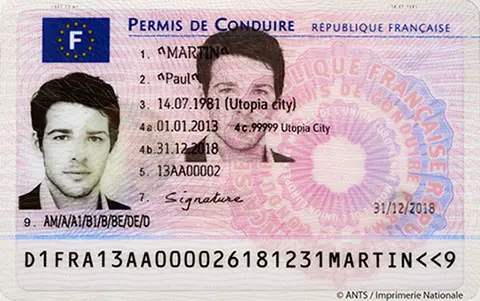
French driving licenses are based on a point system, with most drivers having 12 points. However, new drivers start out with just six points on their license and gain two points per year as long as they don’t commit any traffic violations. By the end of the three-year probationary period, they will reach the full 12 points. Importantly, if a driver loses all of their points, they will lose their license.
Getting a driving license in France
There are two steps to getting a driving license in France. First, aspiring motorists must pass a written test, called the code de la route, on the rules of the road. Nowadays, this part of the French driving test is taken electronically. Questions appear on a screen and you use clickers to select the answers.
Once you have passed the written exam, you then move on to the practical portion. This requires a minimum of 20 hours of accompanied driving with a professional driving instructor. When you and your instructor feel confident in your abilities, you can then take the driving test with an examiner. After successfully passing the driving test, you will have a three-year probationary license. During this time, you must display the red letter ‘A’ on your car.
Exchanging a foreign driving license in France
If your driving license was issued by an EU member state or a country in the EEA, then you don’t need to exchange it to drive in France.
However, if a country outside of the EU or EEA issued your license and you plan on staying in France for longer than one year, you will need to get a French driver’s license. Depending on your nationality (or for American citizens, the state which issued your license), you may be able to exchange your license for a French license. But if your country or state doesn’t have an agreement with France, you will need to complete the same process as those without a license. This means taking the written test, completing the supervised driving hours, and passing the practical driving test.
You can complete all the steps you need to exchange your foreign driving license for a French license online. You will need proof of ID (your passport or French ID card), proof of your immigration status, your current (valid) foreign license, proof of your current address in France, and proof that you still have the right to drive in the country that issued your license.
It is important to be aware that you must request the French license within one year of receiving your first residence permit (carte de séjour) in France. You can read more about this in our article on getting a French driver’s license.
Car registration in France
Whether you purchase a new or used car in France or import one from your own country, you will need to register it with the state if you live in France. You have one month to complete the registration. It is important to be aware that not registering your vehicle within one month of moving to France can result in a fine of up to €750.

Car registration, which is called immatriculation, is quite quick and simple and can be done entirely online through the Agence nationale des titres sécurisés (in French). This is the French government body that is responsible for licenses, registration, and official identity documents.
The website lets you register a vehicle in France for the first time (whether it’s a brand new car or imported) and transfer registration for a used vehicle (véhicule d’occasion). Once you have registered your vehicle, you will receive a carte grise (which literally means ‘grey card’). This is the car’s proof of registration.
The cost to register a vehicle depends on its emissions/efficiency and age (which is called chevaux fiscaux or CV), as well as its fuel type and region. You can calculate the cost of your carte grise with a simulator on the French government website. To give an example, the registration of a car in the Paris region costs roughly €245.
Registering imported cars in France
You can bring your own vehicle into France, without needing to register it, for short stays of up to six months in the country. However, if you are staying for more than six months, you will have to register your car within one month of establishing residency in France.
You can register a foreign car in France (l’immatriculation d’une voiture étrangère) online through the French government’s official website. To receive your proof of registration, you will need to complete Cerfa form 13749*05 and provide some additional documentation; for example, your ID, proof that the car has passed inspection, proof of your address, and proof that the appropriate VAT tax was paid on the vehicle. You will then need to pay the vehicle registration fee.
Drivers with disabilities
Drivers in France with disabilities, or driving passengers with disabilities, can request a Mobility Inclusion Card (Carte Mobilité Inclusion or CMI). This allows them to park for free and without a time limit. You can find the requirements and steps for obtaining the card on the French government website.
If you have a disability and would like to get a driver’s license in France, you can request accommodations for your driving test. You can read more about taking a driving test when you have a disability in France here.
Driving and maintenance costs
In addition to registration fees, there are also other costs associated with having a car or driving in France.
Vehicle inspection and maintenance costs
Cars in France must pass a technical inspection (contrôle technique) every two years. Should the inspection reveal a problem, the owner has two months to repair the issue and pass a new inspection. However, if the inspection detects a critical safety issue, the owner must repair the car before it can be driven.
The cost of a contrôle technique varies, but prices typically range from €70 to €90. To give an example of regular car maintenance costs, oil changes (vidanges) or tire rotations and balancing (contrôle de géométrie et parallélisme) cost an average of €55 and €80, respectively.
More details concerning the safety inspections can be found on the French government website.
Car insurance
The cost of car insurance in France depends on a few variables; notably, whether the driver is a ‘new driver’ who has had their permit for less than three years, as well as the age of the driver and any history of accidents or infractions.
Car insurance companies in France include:
If you’re not sure which insurance company to choose from, you can try out a comparison website such as:
Road tolls
Once outside city limits, the major highways in France (which are called autoroutes) become toll roads. These roads are marked by blue and white signs with a large letter ‘A’. On maps or GPS, they appear with the letter ‘A’ before the highway number, as in A3 or A6.
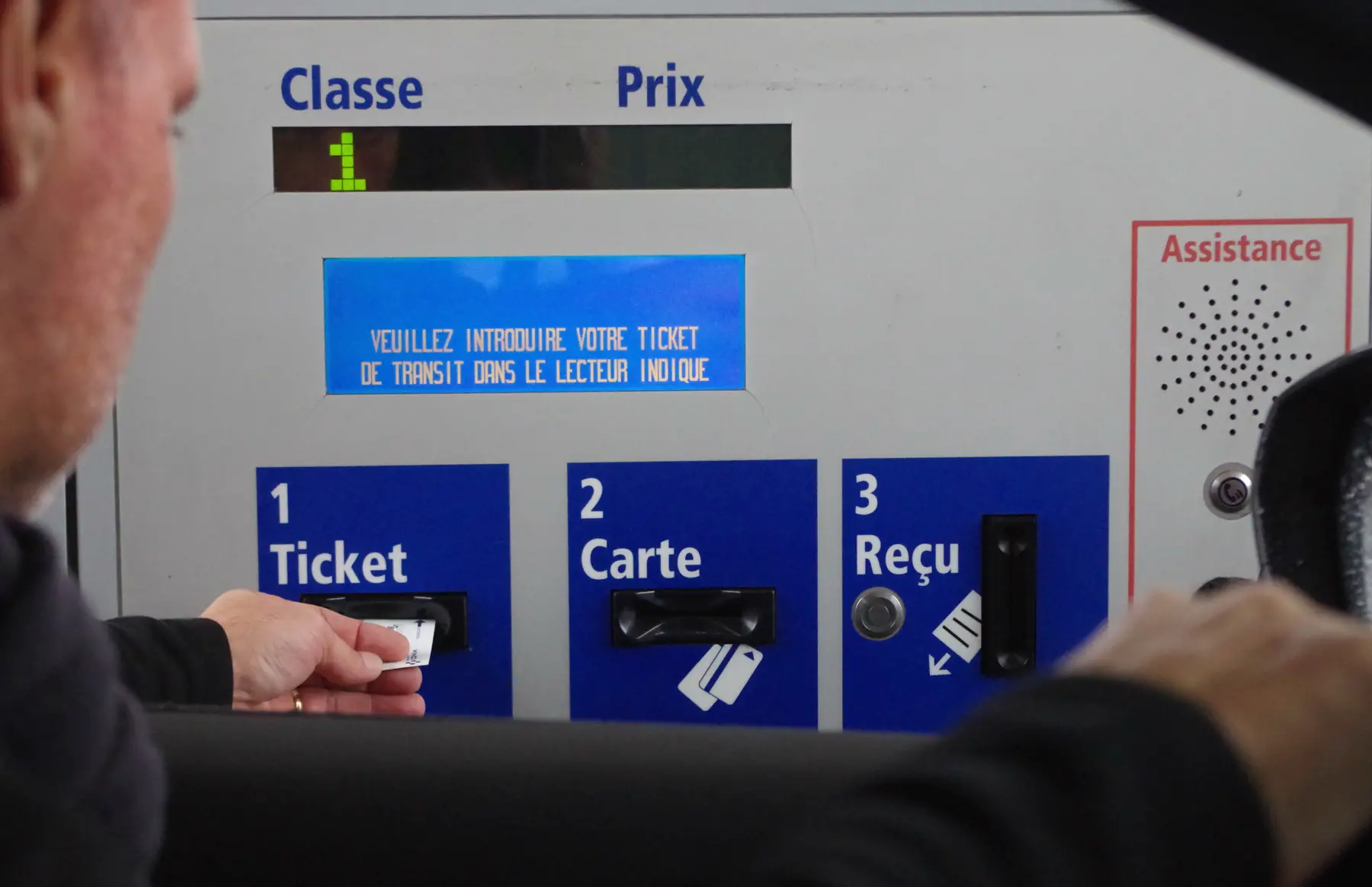
In most cases, you pay the toll (péage) by the kilometer. You pick up a ticket when entering the toll portion of the road and then pay at the exit using your debit or credit card. Unfortunately, tolls aren’t cheap in France, and you can expect to pay between €12 and €25 one way.
Fuel costs
Gas is sold by the liter, not by the gallon, in France. There are approximately 3.8 liters in 1 gallon. At the time of writing (April 2022), prices range from €0.749/l for E85 (a gasoline with a high percentage of ethanol) to €1.802/l for SP98 (premium unleaded gas with the lowest percentage of ethanol), while diesel is at €2.160/l. That converts to approximately €2.85/gallon for E85, €6.85/gallon for premium unleaded, and €8.21/gallon for diesel.
Driving rules and penalties in France
The rules for driving in France are similar to those in the Americas and the rest of Europe. However, there are a few notable exceptions.
General road rules in France
A small difference Americans must adjust to when driving in France is that there is no right turn on red. Even if the road is clear, you must still wait to turn right until the traffic light turns green.
One of the major differences that sets France apart from most other countries is its priorité à droite rule which means that the vehicle to your right has the right-of-way; except if the intersection has a stop sign, traffic light, or solid white line. However, this rule does not apply to roundabouts (ronds points) where cars to your left have the right-of-way.
Although the priorité à droite rule rarely comes into play, it is important to know; especially when it comes to avoiding an accident or fine when driving in rural areas and historic city centers.
Other French road rules to note include:
- Drivers in France are required to have a self-test breathalyzer kit that conforms to French safety NF standards in their cars. They must also have a reflective triangle and vest in case of breakdowns or other emergencies
- All passengers in a car must wear seat belts, even in the backseat. Children under 10 must sit in the backseat unless it is impossible, as in a two-seater. Children must sit in the correct car seat until they are big enough to use a regular seat belt.
- Using headphones or earpieces while driving is illegal
- Drunk driving limits are more strict than in the US or UK; limited to 50mg of alcohol per 100 ml of blood (or 0.05 g/dl as measured in the US, Australia, and Canada). For drivers who have had their license for less than three years, the limit is 20 mg/100ml blood-alcohol level or 0.02 g/dl. Importantly, just one drink can put them over the legal limit and result in them losing their license.
- It is against the law to use the car horn in a French city except in case of an imminent collision
You can find all the road rules in the Code de la route on the French government’s road safety website.
Penalties for minor traffic violations
Committing traffic violations in France deducts points from your driver’s license and can result in an amende. Speeding can cost you anywhere between one and six points and €68 to €1,500 in fines.
Not wearing a seatbelt will cost you three points, running a red light will cost you four points, and so on. You can find a complete list of the points lost per infraction on the French government’s road safety website (in French) as well as a list of fines (in French).
The speed limit in France
The speed limit in France varies based on the type of road and whether it is within city limits. French speed limits also differ depending on whether the driver is a young driver (jeune conducteur) or has already had their driver’s license for three or more years.
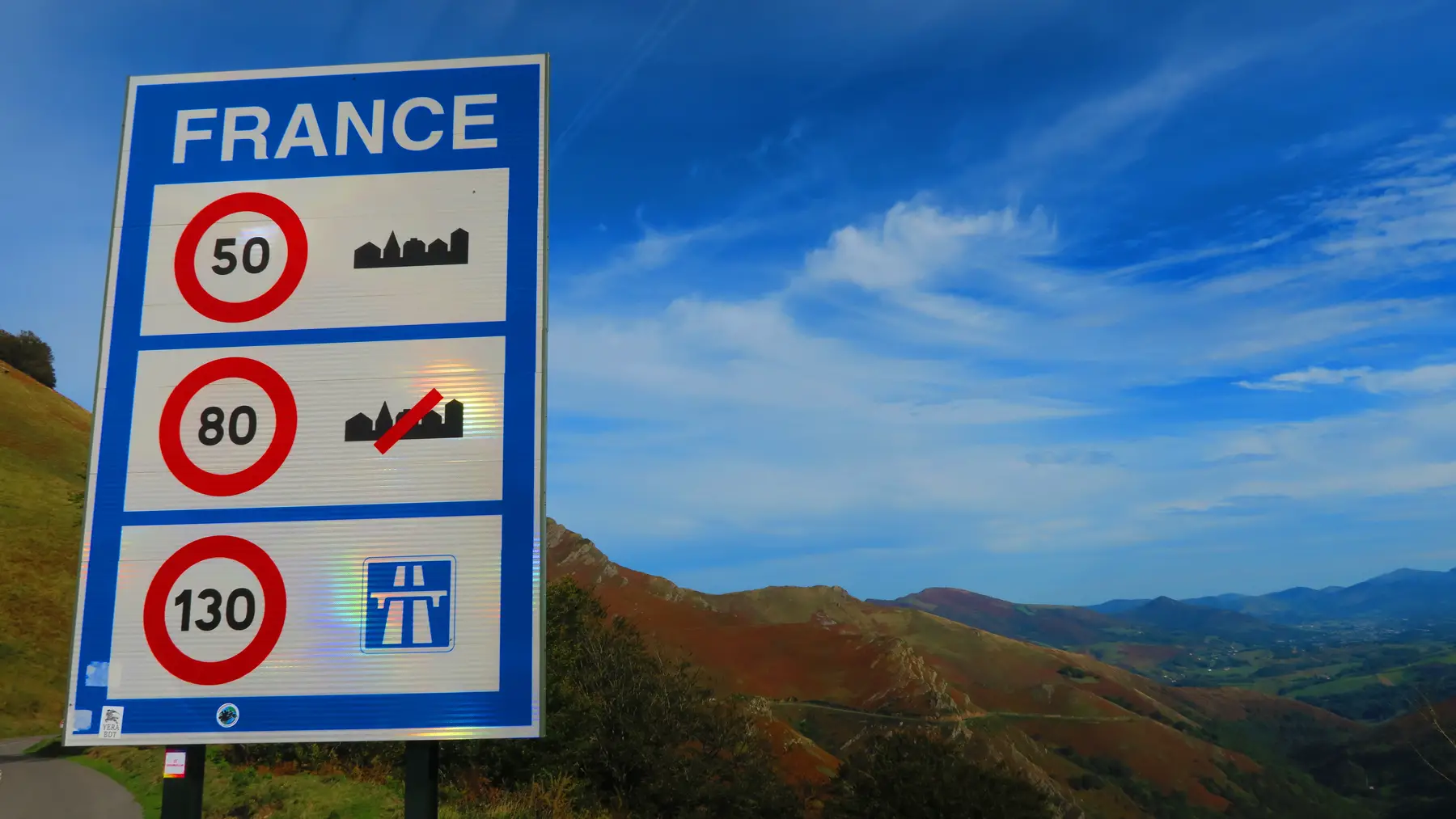
Below is a quick list of the current speed limits in France:
- Autoroute (divided highway): 130 km/h (110 km/h for new drivers)
- Two-lane divided road: 110 km/h (100 km/h for new drivers)
- Roads with at least two lanes in the same direction with no divider: 90 km/h (80 km/h for new drivers)
- Two-direction roads with no median: 80 km/h, can be 90 km/h if the local traffic authority allows (80 km/h for new drivers)
- Roads within city limits: 50 km/h (50 km/h for new drivers)
- Roads in city centers and near schools are 30 km/h zones and are indicated with a sign.
You can find more information on the French government website.
It is important to be aware that speed cameras are used in France to enforce speed limits. You will frequently see signs alerting you to the presence of cameras or radars. However, it is illegal to use any radar-detecting devices in your car.
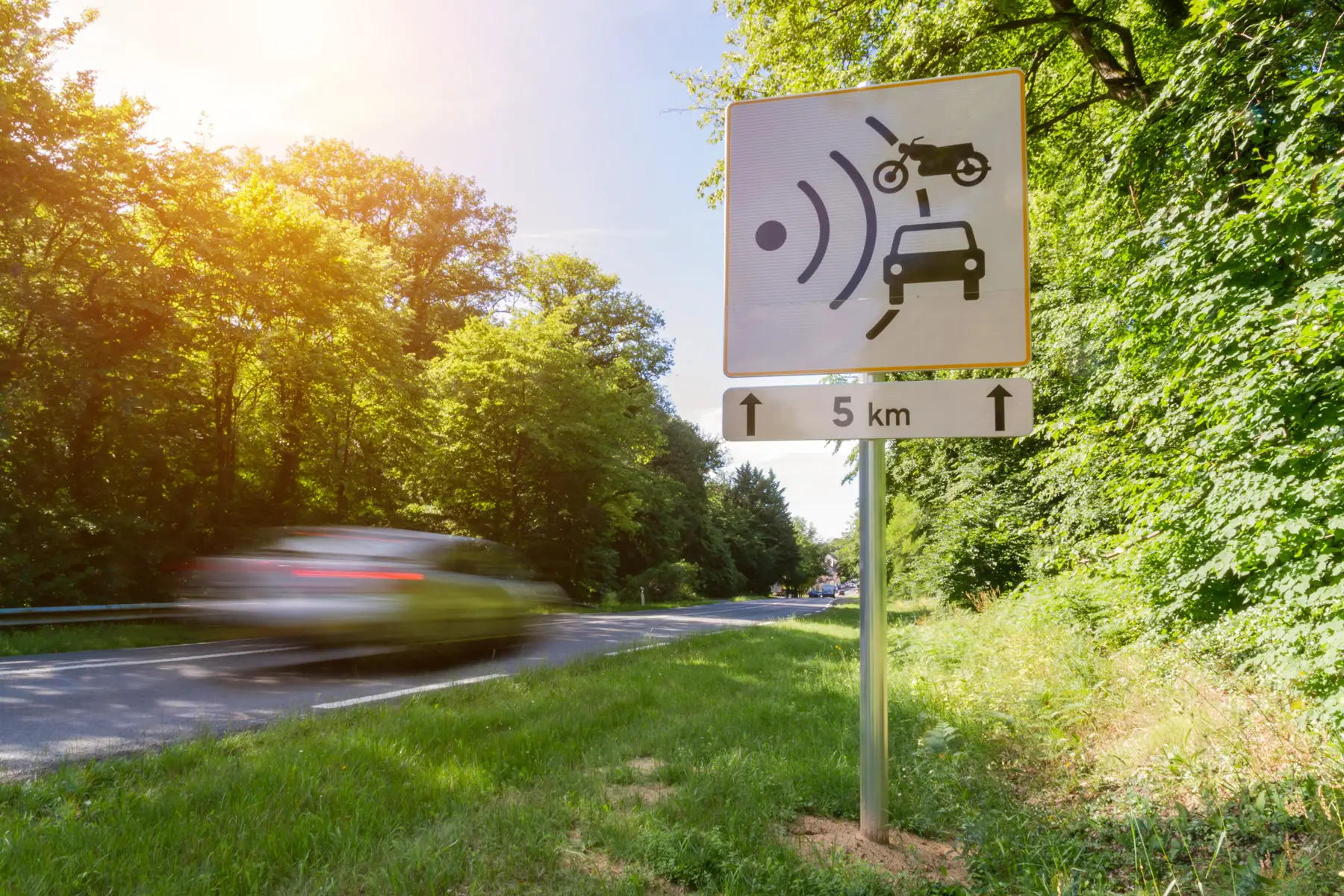
If you are caught speeding, you will lose points off of your license and incur a fine. The cost of the fine and the number of points that you lose will depend on the extent to which you exceed the speed limit:
- < 20 km/h over = -1 point and a fine of up to €135
- 20–30 km/h over = -2 points and a fine up to €150
- 30–40 km/h over = -3 points and a fine up to €450
- 40–50 km/h over = -4 points and a fine up to €750
- ≥ 50 km/h over = -6 points and a fine of up to €1,500 (and your license if you are a new driver)
You will receive a notice in the mail to let you know the number of points deducted and the fine that you must pay.
Driving under the influence
The limit in France for drunk driving is set at 0.5 grams of alcohol per 1 liter of blood (BAC), or 5 grams per 100ml (or 0.05%). This is equivalent to 0.25 mg of alcohol per 1 liter of air when using a breathalyzer. For new drivers, the blood alcohol limit in France is 0.2 g/l or 0.1 g per liter of air for breath tests.
Even without any clear signs of intoxication, driving under the influence of alcohol in France with a 0.08% BAC or above is punishable by two years of prison, up to €4,500 in fines, and the suspension of the driver’s license.
You can learn more about the legal alcohol limits in France on the French government’s road safety website (in French).
Driving under the influence of drugs is also strictly forbidden in France. Drivers risk two years of prison and €4,500 in fines, in addition to losing 6 points off their license. The driver risks these same penalties for refusing a drug test. More details, including the penalties for driving under the influence of drink or drugs, can be found on the road safety website.
Distracted driving laws
It is against the law to be on your phone while driving in France. Notably, while hands-free use via an integrated Bluetooth function is allowed, using an earpiece or headphones is against the law. Furthermore, you can’t pull over to the side of the road to use your phone as the shoulders are reserved for emergencies only.
If you are caught using your phone or headphones, you risk a €135 fine and losing 3 points off your license. And if you commit another infraction while using your phone, you risk losing your license for up to six months.
Driving without a license
If you are caught driving without a license in France, you risk a €15,000 fine and one year in jail. The vehicle you are driving may also be confiscated, and you may face a driving ban for up to five years.
Road signs in France
Believe it or not, there is no official government website listing all of the road signs in France. However, Wikipedia does have a list of the most common road signs in France.
Two road signs that are particularly important to know when driving in France are the city signs. These indicate that you are entering or exiting a city and must adjust your speed.
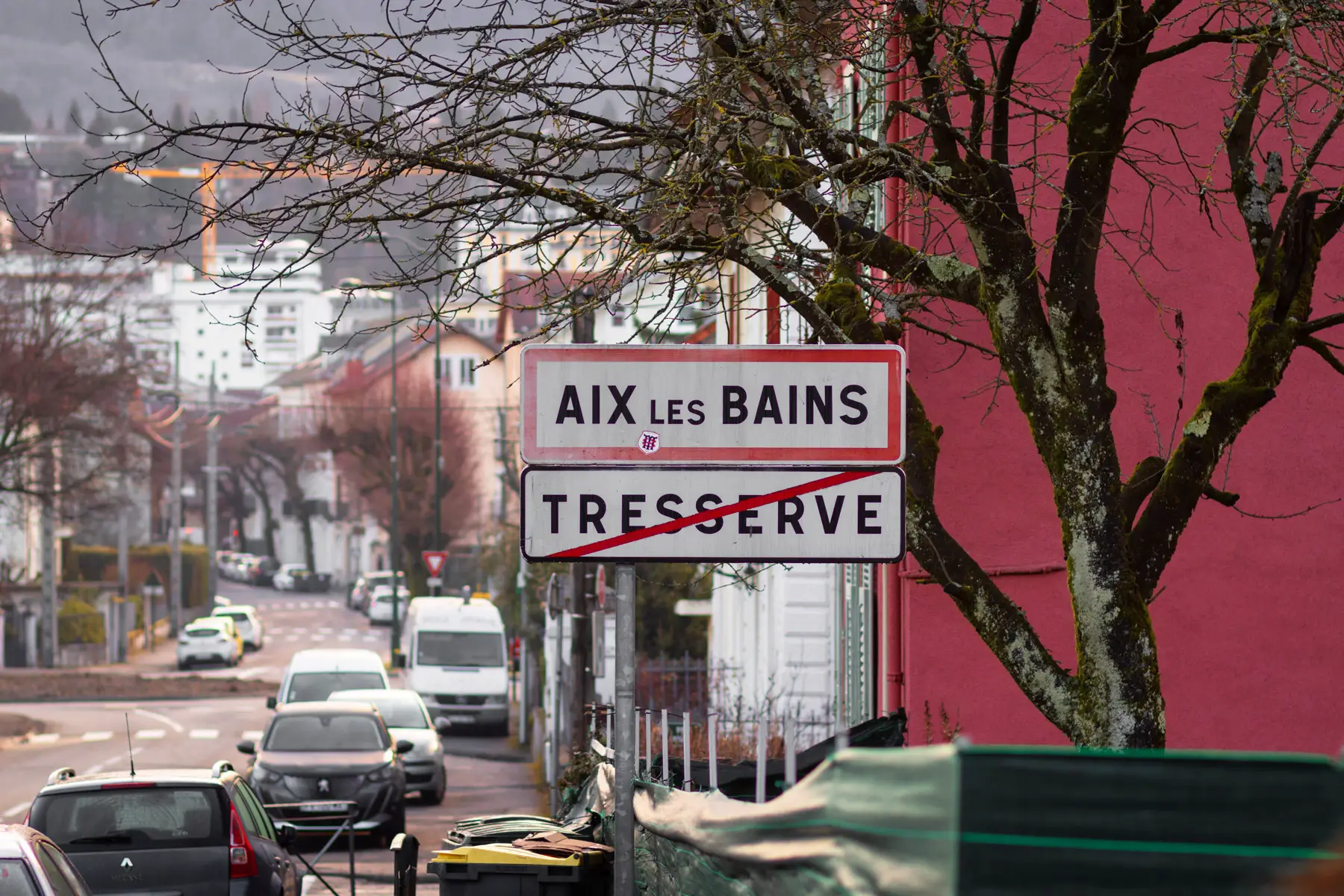
When you see a black and white rectangular sign with the name of a city surrounded by a red rectangle, you must slow down to 50 km/h. When you see a sign with the name of a city crossed out, this means that you are leaving the city and can speed up to 70 km/h.
Traffic information in France
Unsurprisingly, the roads in France are particularly crowded during the beginning and end of the school holidays. This is especially the case near large cities such as Paris, Lyon, and Nantes. You can expect to encounter traffic jams and delays when driving in France during this time.
The Périphérique (the large beltway around Paris) has heavy traffic on most days. If possible, it is best to avoid it during rush hour; 08:00 to 10:00 and 17:00 to 19:00.
Apps like Google Maps or Waze do a great job of letting you know if there is construction or other delays on your route. You can also listen to the radio for traffic updates. For instance, in the Ile de France region, radio station FM 107.7 is a favorite among motorists seeking up-to-the-minute reports.
Parking in France
Parking in France isn’t always easy as the spaces are often quite tight. This applies to both parking on the street and in parking garages. You can find the nearest public parking lots by following the signs with a large ‘P’ in blue.
Generally, you have to pay to park on city streets. You will find small machines called horodateurs nearby where you input your license plate number and the time needed. You can then pay by card, change, or telephone, and place the ticket on your dashboard (on the side closest to the street).
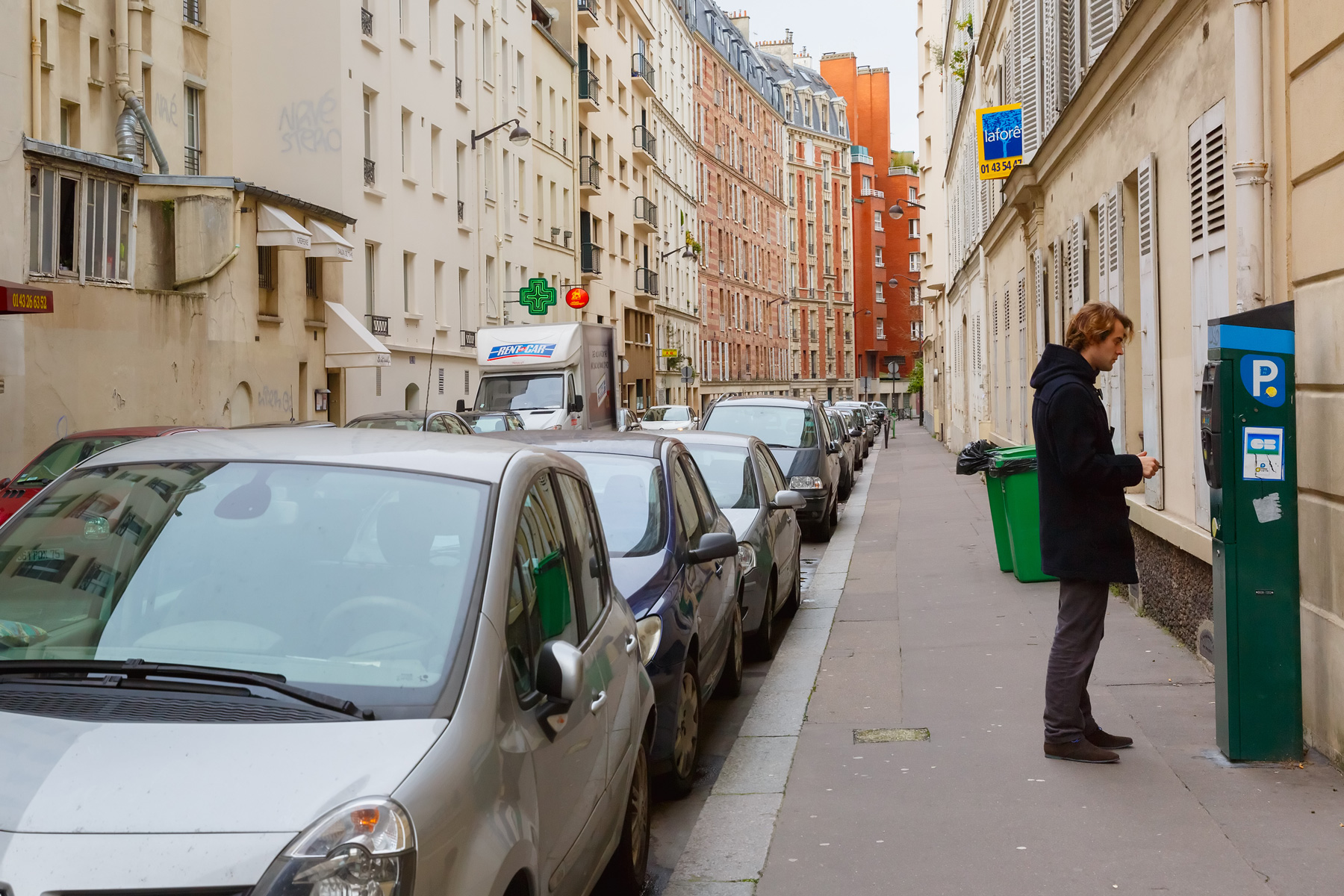
Street parking is often limited to a maximum of two to six hours, depending on the location and the city. However, parking in public lots is usually free at night and on Sundays. You can expect to pay between €2 and €6 per hour for parking depending on the location.
In Paris, street parking is free:
- From 20:01 to 08:59 from Monday to Saturday
- All day on Sundays and public holidays
Otherwise, it costs approximately €6/hour in the city center and €4/hour further out.
Parking garages are often underground in cities, so look for entrances at street level or below. You can also reserve a parking spot ahead of time by using apps such as Zenpark, Onepark, and Parclick.
Road accidents and breakdowns
Even if you know all the road rules and mistakes to avoid in France, things don’t always go to plan. Below is what to do in case you have an accident or a breakdown while out on the roads.
Road accidents
If you have a car accident in France, you should first turn on your hazard lights and get onto the shoulder of the road if you can. Once you are there, place the reflective triangle 200 meters ahead of the car to alert oncoming traffic. In case of a fire, use the fire extinguisher and get as far away as you can from the vehicle.
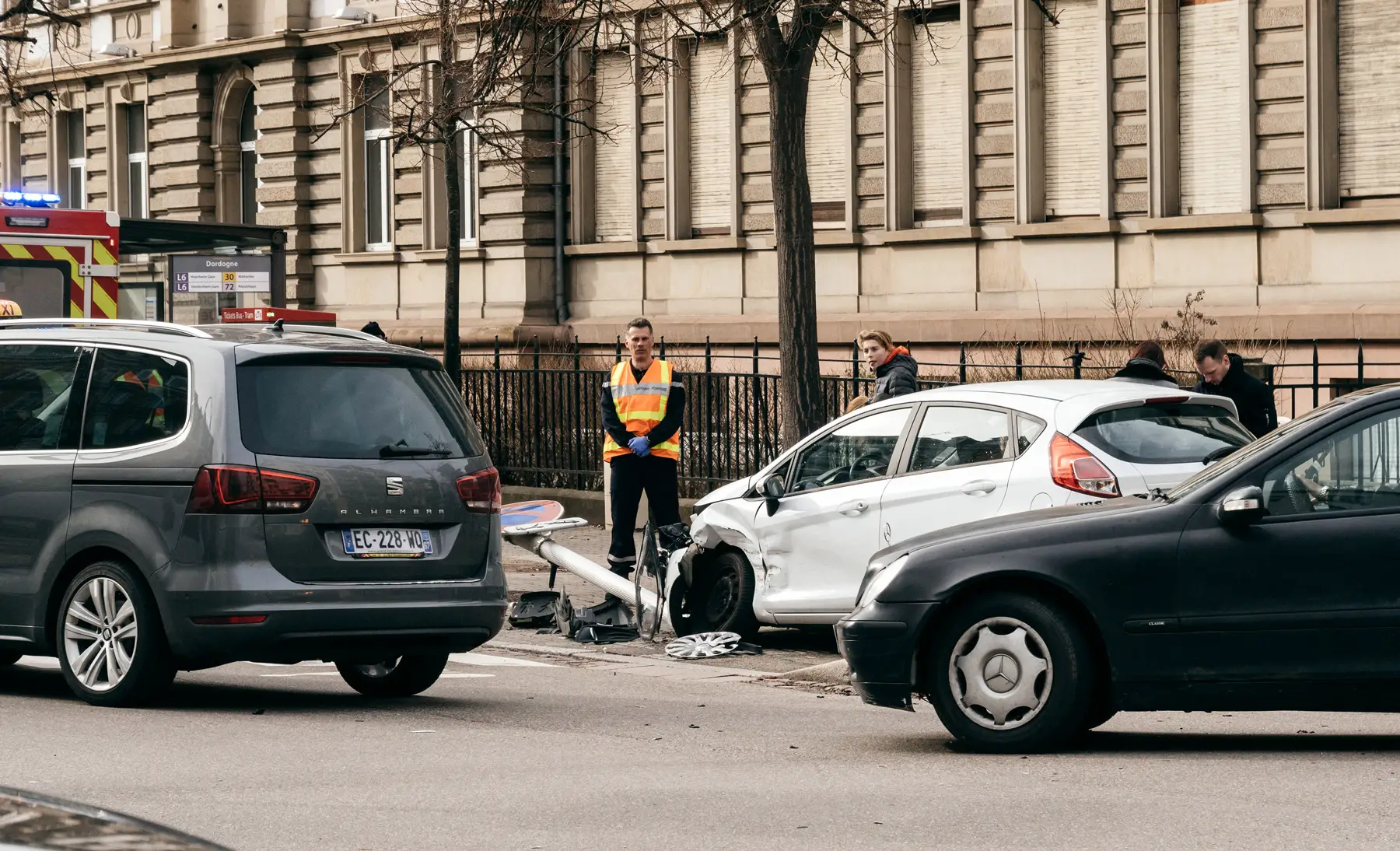
You should call 112 for emergency services to alert them to the accident and request help. Dial 114 for assistance if you are deaf or hard of hearing. If you don’t have a mobile phone, you will find orange emergency telephones every two kilometers along the road.
Make sure to exchange information with any other drivers involved and any witnesses. You should also ask them to stay until the emergency services arrive. Then contact your insurance provider or car rental agency to inform them of the situation.
Vehicle breakdowns
Should your car break down while in France, pull off onto the shoulder of the road if possible and place the reflective triangle 200 meters ahead of your car.
Then, call 112 for the emergency services. The police or official road assistance company will then arrive and tow you to a safe area. The French government sets the cost for this service.
Cars in France
French-made cars such as Peugeot, Renault, and Citroën are very popular in France and offer good quality at reasonable prices. French cars also have the added benefit of being easily serviced and repaired anywhere in the country. However, the same can’t be said for many foreign cars, including American, British, and Japanese brands. Keep that in mind if you buy a car in France.
Hiring a car in France
Most car rental companies in France require drivers to be at least 18 years old. That said, some require drivers to be 21 and to have had a driving license for three years.
All the usual car rental companies operate in France, including Rentalcars. Most rental agencies have offices in or near train stations in larger cities, as well as in airports. They also tend to have a downtown location.

The cost of renting a car per day ranges from €30 to €80, depending on the type of car and season. Week-long rentals typically cost between €250 and €500. Notably, renting an automatic car in France often costs much more than renting a manual one. In fact, you can expect to pay almost double if you don’t drive the latter.
Buying a car in France
To buy a car in France, you can go to a dealership (concessionaire) or buy directly from an individual (particular). In any case, you will need to register the vehicle and complete the steps listed above in order to obtain the registration (matriculation).
Selling a car in France
When selling a car in France, you will need to transfer the registration to the new owner, whether that is a dealership or an individual. You can do this online via the Agence nationale des titres sécurisés website.
Carpooling/car sharing
Uber exists in many cities in France. Chauffeur Privé, a French company, also offers a similar service and has a trip calculator that lets you estimate the cost of your ride.
The most popular app in France for ridesharing on longer trips is Bla Bla Car (in French). This enables individuals to offer seats in their cars at very reasonable prices.
Drivy (in French), on the other hand, allows you to rent a car from an individual. That said, it might be more difficult to find someone willing to lend their car to drivers with a foreign license.
Electric cars and hybrids
Electric cars aren’t common in France. In 2020, INSEE reported that less than 7% of registed cars were fully electric. Hybrids are more popular, making up nearly 15% of cars registered in France in 2020.
Some gas stations and larger shopping centers in France offer charging stations for electric cars. Cities often reserve a few parking spots around town for charging electric cars, too. You can also install a charging station outside your own home with some providers.
Car repair in France
You will need to take your car to a garage (garagiste) to arrange any car repairs in France. Peugeot-Citroën, Renault, BMW, Mercedes, and other dealerships typically offer automotive repair services, too.
Whether it’s for maintenance or repair, you can also take your car to one of the main auto shop chains. For example:
Tips on driving in France
There are still a few other things to keep in mind when driving in France. This includes unwritten rules and details that are generally overlooked by other guides.

Here are some to remember:
- Traffic lights are usually on the right side of the road rather than overhead in the middle of an intersection. Solid white lines marking an intersection indicate a stop, even in the absence of a stop sign.
- Instead of showing a road’s number (D-76) or direction (east, west, etc.), road signs in France usually indicate the next town. You will often see signs that list several towns along the route, from the nearby village to the closest major city. When reading a map, always look for the name of the next big town on your itinerary as well as road numbers.
- Major highways, indicated by signs with blue backgrounds and a white letter ‘A’ for autoroute, are almost exclusively toll roads, or péages, outside of city limits
- On the highway, the French stay in the right-hand lane except when passing. They don’t dawdle in the left lane and get back in the right-hand lane very quickly after passing.
- In France, drivers don’t use their blinkers as a request but rather to indicate an immediate manoeuver
- You should use your right turn signal to indicate when you are exiting a roundabout
Useful resources
- Service Public (in French) – provides information on driving licenses, vehicle registrations, traffic regulations, and offenses
- Securite Routiere (in French) – provides information on all aspects of driving, licenses, and road safety in France
- Service Public – provides information on driving in France on an EU/EEA license
- Agence nationale des titres sécurisés (in French) – the regulatory body for driving license and car registration in France
